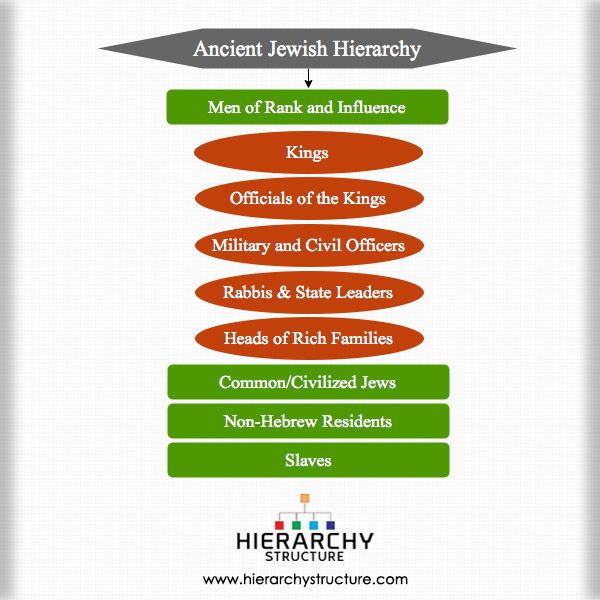The ancient Jews descended from one of Noah’s son called Shem and followed a systematic approach to the social structure or distinction. The ancient Jews followed a social hierarchical structure in which the society was divided into different classes and each class enjoyed the special benefits conferred to them. To know more about the ancient Jewish society, the Ancient Jewish hierarchical structure is described below:
Men of Rank and Influence
The men of rank and influence occupy the top tier of the pyramid. This was the most powerful and influential class and commanded a lot of supremacy from the other class and comprised of the following:
- Kings: Most certainly, the kings held the topmost position among the men of rank and influence.
- Officials of the kings: The King’s officials also enjoyed the rights bestowed on the Royal class.
- Military and Civil Officers: They enjoyed all the privileges and benefits for being the men of rank and influence.
- Rabbis or state leaders: The word Rabbis has a Hebrew origin and it means master. The Rabbis were regarded as the religious and traditional leaders of the Jewish society and the ultimate arbitrators of community decision.
- Heads of rich families: The heads of rich families in Jewish society were also considered to be the men of honour, class and influence.
Common/Civilized Jews
The next strata of the Jewish society were that of the civilized or common Jews. This class of people had the basic rights of being the citizens of the land or society. Their rights included the basic necessities like food, water, shelter, free land and a level of authority. These individuals worked hard for a living and to save for their off springs, and future needs, and necessities. They were not powerful and influential as the men of influence and rank but still were respected and were responsible for the betterment of the society.
Non-Hebrew Residents
The non-Jew residents were the next class of people in the hierarchical structure of the Jewish society. They were the free men who had settled in the Jewish land from outside and were not born there. As a result they did not enjoy the benefits and privileges granted to the Jewish citizens as they were considered as foreigners and not local citizens. Sometimes, they even had to face the hostile attitude of the local Jews.
Slaves
The slaves in the ancient Jewish society occupied the lowest level of the pyramid in the Jewish social hierarchical structure. They were ill treated and denied the basic human right of freedom. They were controlled by their masters who were either the common Jewish people or the men of rank and influence. They were bought as bonded labourers and expected to live on their master’s whims and fancies.
Sometimes the slaves were set free by their masters after they completed a period of seven years as slaves. People acquired the slavery status by birth and sometimes as a punishment for committing a crime or if any individual was unable to pay off a debt, he could be made a slave to the person he owed the debt.
Thus the ancient Jewish hierarchy was a well organized structure in the society. Also, know about Jewish Church Hierarchy.

